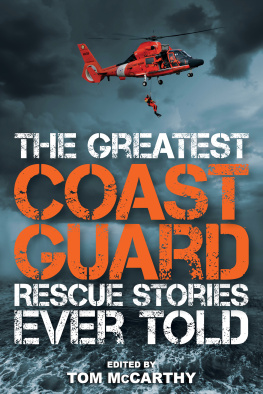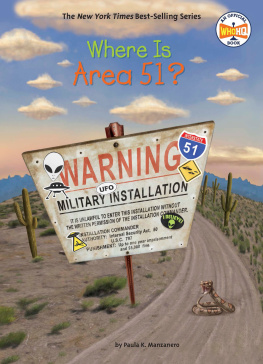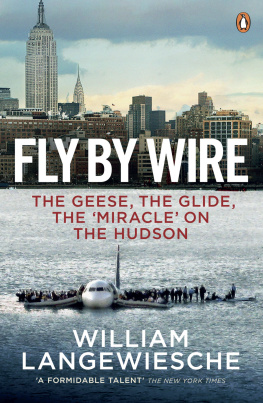The Top 100
Military Sites in America
Places You Must Seeand Perhaps Youve Never Heard of!
L. Douglas Keeney


An imprint of The Rowman & Littlefield Publishing Group, Inc.
4501 Forbes Blvd., Ste. 200
Lanham, MD 20706
www.rowman.com
Distributed by NATIONAL BOOK NETWORK
Copyright 2018 L. Douglas Keeney
All rights reserved. No part of this book may be reproduced in any form or by any electronic or mechanical means, including information storage and retrieval systems, without written permission from the publisher, except by a reviewer who may quote passages in a review.
British Library Cataloguing in Publication Information Available
Library of Congress Cataloging-in-Publication Data
Names: Keeney, L. Douglas, author.
Title: The top 100 military sites in America / L. Douglas Keeney.
Other titles: Top one hundred military sites in America
Description: Guilford, Connecticut : Lyons Press, [2018] | Includes index.
Identifiers: LCCN 2018003511 (print) | LCCN 2018007132 (ebook) | ISBN 9781493032297 (Electronic) | ISBN 9781493032280 (pbk. : alk. paper)
Subjects: LCSH: United StatesHistory, MilitaryGuidebooks. | Military basesUnited StatesGuidebooks.
Classification: LCC E181 (ebook) | LCC E181 .K37 2018 (print) | DDC 355.00973dc23
LC record available at https://lccn.loc.gov/2018003511
 The paper used in this publication meets the minimum requirements of American National Standard for Information SciencesPermanence of Paper for Printed Library Materials, ANSI/NISO Z39.48-1992.
The paper used in this publication meets the minimum requirements of American National Standard for Information SciencesPermanence of Paper for Printed Library Materials, ANSI/NISO Z39.48-1992.
Printed in the United States of America
Introduction
A high school field trip to Washington, D.C., invariably includes a trip to the Smithsonian National Air & Space Museum, where the nations largest collection of aviation-related artifacts is on display. You can see everything from the Wright Flyer that began powered flight, to the orange-colored Bell X-1 rocket plane that propelled Chuck Yeager through the sound barrier, to a supersonic F-4 Phantom fighter jet. The Smithsonian truly has something for everyone and plenty of things to stimulate your imagination.
But instead of your imagination, how about walking in the footsteps of Chuck Yeager and standing where he stood when he looked up to the sky? Or what about that F-4 Phantom fighter jet of Vietnam fame? Instead of walking around a still-and-silent Phantom in a museum, did you know that there are places where you can actually sit in the cockpit of a real F-4 and smell that musty smell and hold that stick and run your fingers over the instrument panel just like pilots did decades ago?
Well even show you where you can fly one.
Well show you where in Georgia you can walk into a World War I trench and smell the mud and feel the walls closing in on you just as our doughboys did in France 100 years ago.
Well show you where in North Carolina you can see the tail rotor from the US Army Blackhawk helicopter that crashed in Mogadishu, the very same chopper that was the subject of the book Blackhawk Down .
In New Jersey, well tell you how to get on a Navy base and see where the Hindenburg crashed to the ground and burned. Did you know you can walk up to that exact spot?
Well tell you where in California you can see the underwater obstacles that were used to train our Underwater Demolitioin Teams (UDT) specialists so they could clear the beaches on D-Day. Or where in New Jersey you can walk around an abandoned Nike missile site used during the Cold War to defend our cities. Or where you can walk through a battleship and then spend the afternoon looking at tanks and the bombers of World War II in Alabama. Or where you can walk to the exact spot where the first atomic bomb was detonated in New Mexico.
Want to fire the big gun on an M4 Sherman tank? How about riding in a PT boat like Jack Kennedy did, or sailing on a Liberty ship as millions of our soldiers did in World War II? Have you ever seen a MiG-29? Or slept on a submarine? Or flown in a F-4 Phantom? You can.
The Top 100 Military Destinations is a journey through the histories, people, artifacts, and places where heroes stood their ground, where technology was advanced in hush-hush hangars, where hardware debuted famously or infamously, and where the guns, helmets, swords, helicopters, tanks, ships, and trucks that saved lives and helped win battles are on display for us to forever remember. On the beaches of Delaware and New Jersey, you will discover a string of imposing World War II fire control towers that still peer out to sea silently looking for Nazi submarines. Among the incredibly large artillery pieces exhibited at the little-known US Army Field Artillery Museum in Fort Sill, Oklahoma, is the M65 cannon that fired a nuclear artillery shell (it was nicknamed Atomic Annie). The US Army and the US Air Force both operated land-based railroad cars on which were placed massive guns that helped win World War I (in the case of the US Army), or, in the case of the Air Force, kept nuclear-tipped ICBMs on the move so the Russians couldnt target them. Remember those dramatic TV clips of missiles leaping out of the sea? You can touch onea Polaris Intercontinental Nuclear Missileat the nearly unknown White Sands Missile Range Museum in White Sands, New Mexico.

Todays museums are hardly the stuff of your grandmothers generation. Curators encourage you to walk through helicopters and touch tanks and to see, hear, and smell the (re-created) environment of combat. Seen here: The view from the guard tower at the Vietnam Experience at Patriots Point, South Carolina. Photo courtesy of authors collection
And, yes, the 100 Places are overwhelmingly museums, and for good reason. If an object or event was important, someone had to raise money to preserve it, and that meant they created a nonprofit organization for that purposeand most nonprofits are called museums. But thats a mere technicality; dont be put off by the word. These are not museums in the traditional sense. Not if crawling into the turret of a M1 Abrams battle tank is a museum. Or if walking the decks of a battleship is a museum, or if squeezing down a silo 40 feet to see an ICBM is a museum. Not if seeing the real Enola Gay or walking through a diorama depicting combat on an island in the Pacific complete with soldiers, guns, flashing lights, the sounds of mortars exploding, and even the smell of smoke is a museum. Military museums are destinations that go overboard to bring their stories to life. In a world of 140-word tweets and VR video gaming, museums are now telling stories dynamically, visually, and viscerallyyou literally walk into life-sized, high-definition exhibits that immerse you in the sights, sounds, motion, and even smells of battle. In the National Museum of the Marine Corps, youll walk through a portal unsuspecting of where you are until you realize that you are in fact inside a helicopter and are about to come face-to-face with the enemy in a firefight taking place somewhere in the Pacific. The National Infantry Museum in Georgia has incredibly accurate dioramas with realistic topographies and a confusing swirl of lights that put you in the middle of the chaos of battlefields, be it the Vietnam War or the Persian Gulf. In Texas, you can watch reenactors demonstrate the taking of a Pacific Island, complete with flamethrowers and loud sound effects. In New Jersey, you can listen to the quiet voices of grateful survivors who were evacuated from Manhattan in the aftermath of 9/11 by boat . Each of these sites tells the stories of people and places that would otherwise be just another person or place until that moment when they become part of our national story. And, yes, many of the places will tell history their way, through their eyes, they way they experienced it. After all, to understand history we have to see it from every angle possible. Whats that mean? It means soldiers sacrificed and war is dirty, and thats part of what youll see, too.
Next page



![Captain Chesley B. Sullenberger III - Sully [Movie Tie-In] UK: My Search for What Really Matters](/uploads/posts/book/404353/thumbs/captain-chesley-b-sullenberger-iii-sully-movie.jpg)








 The paper used in this publication meets the minimum requirements of American National Standard for Information SciencesPermanence of Paper for Printed Library Materials, ANSI/NISO Z39.48-1992.
The paper used in this publication meets the minimum requirements of American National Standard for Information SciencesPermanence of Paper for Printed Library Materials, ANSI/NISO Z39.48-1992.